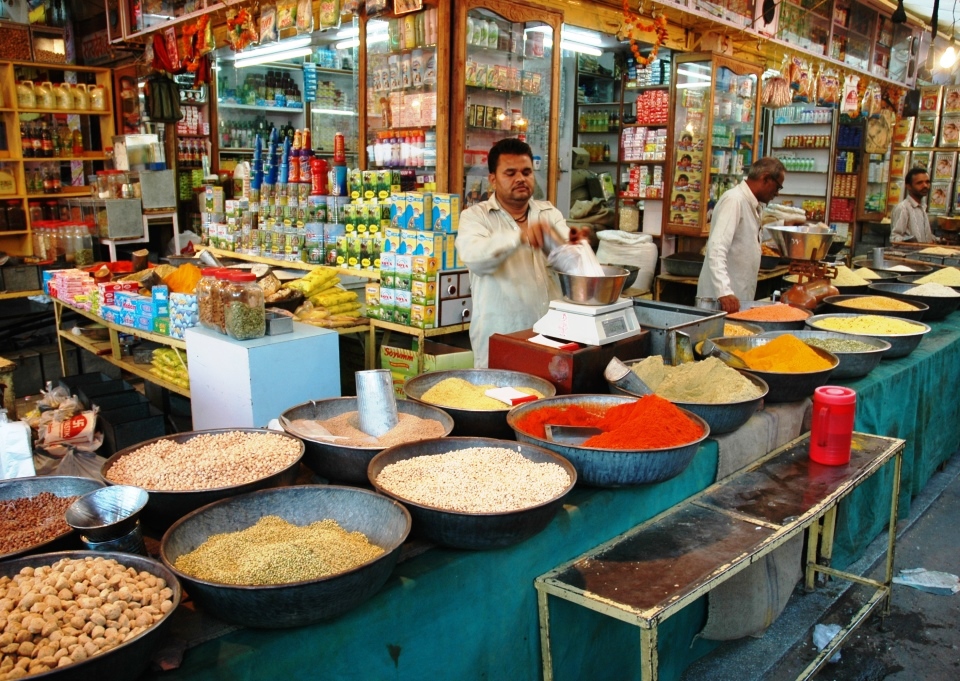With the changing demographic features and improvement in quality of life of urban India, the Indian retail sector is witnessing a tremendous growth. As per AT Kearney’s annual Global Retail Development Index (GRDI), 2010 India is ranked third in the list of most attractive market for retail investment. The retailers are now selectively focusing on smaller cities/emerging cities of India like Chandigarh, Ludhiana, Jaipur, Lucknow, Kochi, Nagpur, Indore, Nasik, Bhubaneswar, Visakhapatnam, Coimbatore, Mangalore, Mysore and Thiruvananthapuram. The emerging and potential cities are projected to contribute significantly to retail revenues. Although organized retailers entered the tier cities of India in early 2000, their growth has been modest during this period. This prompted a study to establish the potential of emerging cities for the growth of retailing with the focus on consumer preferences and behavior. Further, since these cities were dominated by traditional retailers, the study also attempts to establish the impact of organized retailers on unorganized sector with respect to the purchase behavior consumers of food and grocery (The outlets which sells food, grocery, household items, toiletries and cosmetics).
SEE ALSO: Brand China
The main objective of this study has been to analyze the impact of growth of organized retailers on unorganized retailers in the food and grocery segment in emerging cities of India. With this overall objective, the major sub objectives chosen were to analyze present retail scenario with respect to the share of unorganized retailers, the factors affecting the purchase behavior of consumers with respect to food and grocery and the perception of unorganized retailer on the entry of organized players based on performance of last two years. Further, the study was also aimed at establishing the future course of action of unorganized retailers to compete with the organized retailers. Towards this the first set of hypothesis for the study was formulated to evaluate the unorganized retailer business, the second set of hypothesis was formulated to study the buying behavior of organized retail consumers and the third set of hypothesis was formulated to identify the buying behavior of unorganized retail consumers.
The unorganized retailer survey revealed that using the facilities like air-conditioning, electronic weighing machines, computerized billing etc which has been the strong features of organized retailers and by incorporating the services like home delivery and cash credit would help them retain their customers as well as attract more customers. The finding of the customer survey with respect to the factors influencing the selection of an outlet also indicates the services and facilities provided by the outlet is a deciding factor for choice of outlet. Hence unorganized retailers should aim at imbibing the above mentioned facilities, to the extent feasible. The survey on the buying behavior of customer, reveal that the distance from the respondents’ residence to the outlet is one of the deciding factors in the preference of outlet. The customers do not mind traveling greater distances to reach an organized out let for the purchase of packaged foods household cleaning products and fruits & vegetables. This is also substantiated in the organized retailers’ customer survey results. This could be due to the wide choice of the products available in organized retail outlet. Hence unorganized retailer should endeavor to add more variety of household cleaning products, packaged food and fruits & vegetables in their outlet.
Majority of unorganized retailers prefer to start another business along with the existing one which is indicative of their confidence in the existing business. However majority still feel that they need to adapt to changing market trends and supermarkets are the way to future. This paradox emanates from his lack of clarity as to the prospects of imbibing methods adopted by an organized retailer to woo customers. It is felt that a successful unorganized retailer should try and consolidate his stronghold, wherein he utilizes the available resources and innovative methods to face the challenges from the organized retailers. Towards this, initiatives like co-operative collaboration which enables individual retailers to match the prices offered by organized retailers may be attempted. It will entail central sourcing of consumer goods by the cooperative and then passing on the goods to the individual retailers along with the price advantage. This will then result in large base of consumers preferring to do business with the friendly unorganized retailer.
One of the key observations by customers of organized retailers is that it is very difficult to find the uniqueness in retail stores. Uniqueness in retailing requires innovation through an appropriate mix of physical stores and online formats, aided by technology drivers like mobile phones, which would result in distinct retail models. This would also help them reach out to a wider customer base in a shorter time and at lower costs. Companies in India should seriously consider leveraging existing lines of business into retail formats, whether through a chain of stores or online sales models. There are ample opportunities for companies who wish to enter the retail business and develop unique value propositions for their customers.
The customer survey results reveal that a majority of consumers support opening of more organized outlets. This is due to the fact that consumers see large organized outlets as a way to an enjoyable shopping experience. It only reiterates that in addition to the price advantage, the image and the ambience of an outlet influence the consumers significantly. It is therefore beneficial for the unorganized retailer to find ways and means to give a face lift to his outlet in terms of these aspects. In this direction, innovative programmes such as “super value store programme” which is aimed at small unorganized retailers to upgrade the look and feel of the store and add value to their stores. As a part of this initiative FMCG companies buy shelf space from the retailer and give some discount on their products. Besides these tangibles they also train unorganized retailers on modern retail basics. Unorganized retailers therefore need to harness benefits of such programmes.
Even in unorganized outlets it is beneficial for the retailer to have a one stop solution where all daily consumable items are available rather than having specialized products. This will draw more customers to the outlet and even increase the consumption of related items. One of the major hurdles in the development of unorganized retailer is lack of adequate funds. Majority of them are small scale retailers who don’t have the wherewithal to upgrade themselves to meet the changing market conditions. The government/financial institutions may consider this and offer adequate funds in the form soft loans.
The survey findings are indicative of the fact that in smaller cities/emerging cities of India, there is a definite distinct space for different types of retail formats. The varying socio-economic and cultural aspects play a vital role in the preference of outlet. Not withstanding this modern efficient ways of conducting business is the need of the hour irrespective of the type of the retail outlet. The unorganized retailer in particular needs to be fully aware of this reality. The lower levels of education prevalent in the unorganized retail sector along with the instances of agitations against organized retail formats calls for institutionalized intervention by government agencies towards educating and supporting unorganized retailer.






